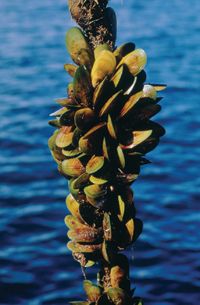Aching For Alternatives
One in five U.S. adults has been diagnosed with some form of arthritis, according to 2009 estimates by the Centers for Disease Control and Prevention (Atlanta). And for the millions of people suffering from inflamed joints and other painful symptoms, there are just as many products claiming effective treatment. Non-steroidal antiinflammatory drugs (NSAIDs), such as over-the-counter and prescription drugs like aspirin or ibuprofen, can come with adverse side effects, including chronic stomach pain, high blood pressure, and ulcers. On the other hand, dietary supplement companies touting natural arthritis remedies self-regulate their products, so there can be doubt surrounding these, too.
John Hardin, MD, chief science officer at the Arthritis Foundation (Atlanta), believes that there is some consumer uncertainty when it comes to choosing joint-pain treatment options, pharmaceutical or alternative. In part, this is because there are more and more products arriving on the market touting joint-pain solutions. However, it is also because "there's an absence of definitive treatments that can really change the course of the disease," he explains. Thus, consumers may be even more uncertain as to which treatments are the most effective.
Among some of the natural joint-pain products entering the market are three of exotic origin.

French Maritime Tree Bark
Europe's largest pine forest, the Landes forest in southwestern France, is home to a tree that may have the next answer to human joint health. Since the 1970s, scientists have been studying an extract from the bark of French maritime pine trees for its antioxidant capacity and potential to fight off a range of pain producers in the body.
The bark has made news under its trademark name, Pycnogenol. Over the last two years, several studies have been published citing the extract's ability to lower the necessity for NSAID usage for pain symptoms in osteoarthritis patients. Studies also demonstrate the bark's ability to reduce C-reactive protein (CRP) levels. CRP levels increase in the bloodstream of osteoarthritis patients during heightened inflammation, so some researchers believe the two are directly related.
A study published this June in International Immunopharmacology found that Pycnogenol also inhibits the production of cyclooxygenase-2 (COX-2). COX-2 is an enzyme partly responsible for producing prostaglandins throughout the body. Prostaglandins are chemicals that deliver pain signals to the brain and also directly cause swelling in joint tissue. These results could be of interest to consumers who want an alternative to NSAIDs that inhibit COX-2.
Jason Theodosakis, MD, author of The Arthritis Cure and professor at the University of Arizona College of Medicine, sees Pycnogenol and other natural COX-2 inhibitors as a potential turning point for consumer options, since pharmaceutical COX-2 drugs have a history of reported adverse side effects and even fatalities.
"With ever-increasing reports of adverse events related to NSAIDs, especially the COX-2 inhibitors removed from the market, some consumers have started to place safety at or near the top of their requirements for joint-health products," says Theodosakis.
Pycnogenol's source happens to be the natural source of pine trees. Natural Health Science (Hoboken, NJ), the exclusive North American raw material supplier for Pycnogenol, states that the pine trees used for Pycnogenol are cultivated without pesticides or herbicides and that no serious side effects from its use have been observed or reported in clinical trials. Natural Health Science's Pycnogenol has also received Generally Recognized As Safe (GRAS) status for its use in U.S. functional foods and beverages.

Green-Lipped Mussels
Another discovery in joint products takes us across the globe to New Zealand, where green-lipped or greenshell mussels (GLMs) have been quietly undergoing decades of research. A readily available food source for New Zealanders, GLMs are packed with a unique natural composition of essential omega-3 fatty acids, glycosaminoglycans, and antioxidants, among other nutrients. Below are the benefits that each ingredient provides to joints.
"Long-chain omega-3s EPA and DHA assist in the biochemistry that reduces inflammation," says Tom Brenna, professor of nutritional sciences at Cornell University. "EPA is a direct competitor with the omega-6 fatty acids, specifically arachidonic acid, which is the immediate precursor for proinflammatory-signaling molecules. In this respect, it acts in a manner similar to aspirin, an NSAID. DHA has similar effects."
Glycosaminoglycans are thought to support healthy joints in another way. "Glycosaminoglycans are used by the body for the biosynthesis of compounds called proteoglycans," says John Croft, marine consultant for GLM extract supplier Glycomarine (Mt. Bethel, PA). "The proteoglycans have a very strong affinity for water molecules in the joints, to which they bind and form very large, slippery, space-filling molecules. The function of these large combination molecules is to act as shock absorbers and also lubricants in the joints."
Glycomarine states that its GLM product also contains several antiinflammatory minerals: boron, manganese, and copper. However, consumers shouldn't assume that all GLM products contain the same nutrients.
Because dietary supplement companies self-regulate, claims-particularly antioxidant claims associated with some GLM products' omega-3s-should be scrutinized. One problem with antioxidants is that if they are exposed to air, their efficacy diminishes, says Theodosakis.
Accordingly, GLM suppliers are striving to reach higher oxidative stability with their products, from the processing to the storing stage. This May, Waitaki Biosciences (Christchurch, New Zealand) launched pernatec, a new GLM powder that uses an antioxidant blend to improve antioxidant retention. Antioxidant retention levels for Waitaki's pernatec have been recorded to be as high as 42% in high-pressure oxygen, high-heat environments (80º C), according to the company.

Krill Oil
Keep searching the ocean, and you'll find another possible joint-pain reliever. As the most abundant biomass on earth, krill may be more than just food for whales. Research suggests that this shrimplike zooplankton may possess antioxidative and antiinflammatory properties.
"The long-chain omega-3s in krill oil are contained in phospholipids, specifically phosphatidylcholine," says Brenna. This means that krill oil omega-3s, because of how they are stored, may provide for better utilization of their antiinflammatory properties. "There are data that suggest that long-chain polyunsaturated fatty acids consumed as a component of phospholipids are more effectively used than triacylglyceride oil, though this is by no means certain," says Brenna. "Also, phosphatidylcholine is a source of choline, which is also a nutrient and thus may improve utilization of DHA and EPA."
Some research suggests that CRP levels could be influenced by krill oil. Neptune Biotech (Quebec) has been conducting studies on its krill oil, called NKO, and results have been optimistic. The Journal of the American College of Nutrition published a study in 2007 in which 90 Canadian patients suffering from chronic inflammation were given 300 mg of NKO krill oil or a placebo, daily. CRP levels were most notably affected after seven days of supplementation. The NKO group showed CRP reductions of 19%, compared with a placebo group whose CRP levels increased by 15.7%.
Patients were allowed to take acetaminophen (a common NSAID) for pain during the study and, after 30 days, the NKO group reduced its acetaminophen use by 31.6% due to diminishing joint pain. Comparatively, the placebo group reduced its NSAID use by just 5.9%.
Pain levels were also assessed by the Western Ontario and McMaster Osteoarthritis Index (WOMAC), a common test used to assess experiences of osteoarthritis pain. WOMAC scores showed reduced pain in the NKO group upon follow-up visits after 7, 14, and 30 days of the study. These results suggest that krill oil could have a significant effect on short-term pain for osteoarthritis patients.
In addition to positive studies of late, Neptune stresses its krill oil as a safe and natural alternative. GRAS status achieved this January bodes well for NKO, and the company claims that its krill is free of heavy metals, dioxins, and pesticides. Since krill is near the bottom of the food chain, it's less likely to be contaminated from something it has eaten.
Scrutinizing Natural Alternatives
While these alternative joint treatments do come from mother earth, experts still stress caution in using them. "Natural joint-health products cannot be assumed to be safe just because there is little or no adverse event data," says Theodosakis. "The lack of safety data does not mean the product is safe. You wouldn't know this from the short-term studies and data that are often done to support the use of natural joint-health products."
But if we put aside the debate of natural versus pharmaceutical products, there is one simple treatment that doesn't get enough credit: diet and exercise. At the Arthritis Foundation, Hardin stresses: "We do not have satisfactory solutions for arthritis. NSAIDS and other agents can help a bit, and antioxidants are helpful, but we need more information about their effects. Exercise and weight loss are our best treatment options and can reduce symptoms by as much as 50%." Arthritis patients should keep this in mind when scouring the aisles and questioning their doctors about cures for their aching joints and pains.

